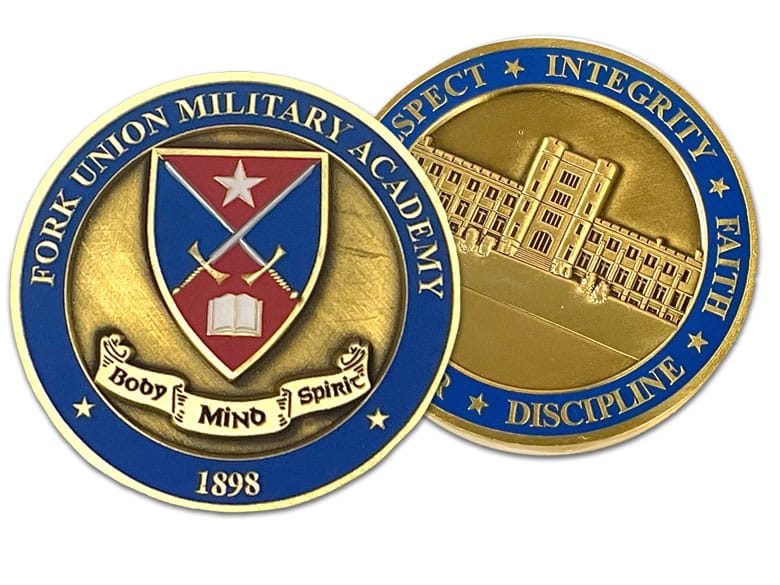

You may have seen it on the news or in photographs: the glint of metal in the palm of the US President as they shake hands with a distinguished individual. This brief yet significant exchange may have piqued your curiosity, leaving you to wonder just what that shiny object might be. The answer lies in the rich tradition of challenge coins, a long-standing practice with roots in military history that has evolved into a powerful symbol of recognition, honor, and camaraderie.
In this article, we will explore the fascinating history, meaning, and tradition of challenge coins, delving into their origins, their growth in the US military, and their use today. As you learn more about these tokens of appreciation and the stories behind them, you'll gain a deeper understanding of the significance of that glint of metal and the powerful message it conveys.
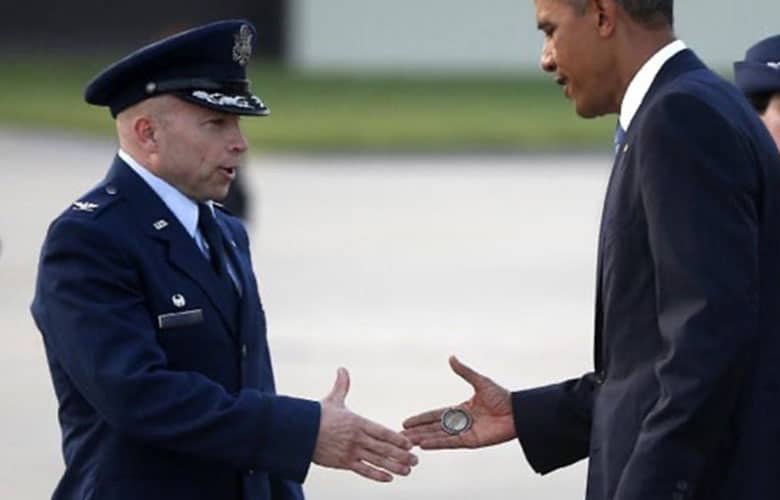
Challenge coins are small, medallion-like tokens, often adorned with the emblem or insignia of the presenting organization. Challenge coins serve as a symbol of membership, belonging, and camaraderie, forging a strong bond among those who possess them. Additionally, they are used to acknowledge an individual's achievements, dedication, or exemplary service, and serve as a tangible reminder of the appreciation and respect of their peers and superiors.
Receiving a challenge coin is a great honor, as it signifies that the recipient has played a special role, making a significant impact on their peers and the organization as a whole.
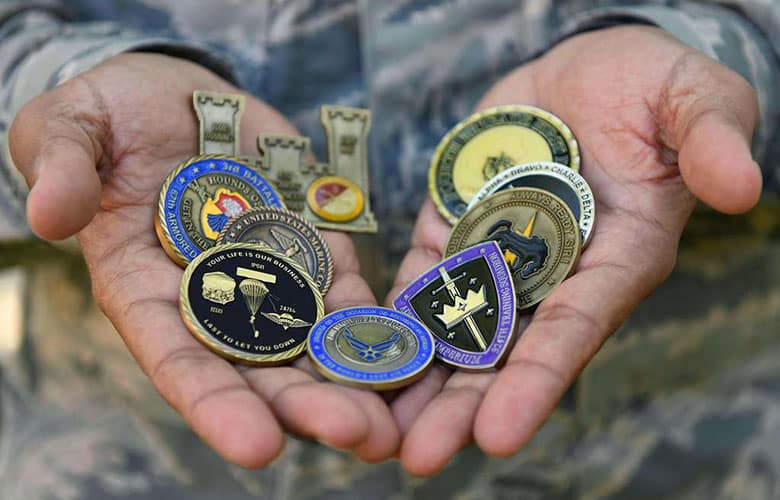
Today, challenge coins are used across all branches of the US military, including the Army, Navy, Air Force, Marine Corps, and Coast Guard. They have become an integral part of military culture and tradition, with each unit creating their unique coins featuring their insignia, motto, or other elements that represent their identity and values. The tradition has not only spread throughout the military but has also been adopted by other organizations such as police, fire departments, and even academic institutions such as Fork Union Military Academy.
The origin of the challenge coin is somewhat murky, hidden perhaps in "the fog of war." Peter Morrell of Wizard Pins (a manufacturer of modern challenge coins) suggests that the challenge coin dates back to Roman times, when soldiers who performed exceptional services would be rewarded with Roman coins which might bear the legion's insignia—bonus pay, as it were.
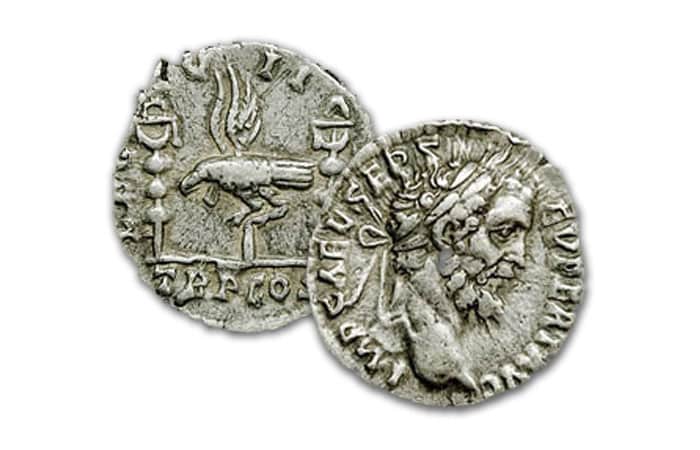
The more modern origin of the challenge coin as we know it can possibly be traced back to World War I, with a story, which may be apocryphal but is widely told, involving a young American pilot who volunteered for a newly-formed flying squadron. As a gesture of camaraderie and unity, the wealthy squadron leader commissioned the creation of bronze medallions, each bearing the squadron's emblem, which he presented to his fellow pilots as a memento of their service together.
One young pilot, who wore the medallion in a small leather pouch around his neck, was later shot down over enemy territory and captured by German forces. The Germans confiscated all of his identifiable belongings, leaving him with only his medallion. During an air raid, the pilot managed to escape captivity and, dressed in civilian clothing, made his way to the front lines in the hopes of reuniting with his squadron.
As he approached the allied lines, the young pilot was apprehended by French soldiers who, unable to verify his identity, suspected him of being a German saboteur. Facing execution, the pilot remembered his medallion and presented it to his captors, who recognized the squadron's insignia. The French soldiers delayed the execution, giving the pilot enough time to confirm his identity and ultimately saving his life.
Upon his return to his squadron, the pilot's story spread, and the tradition of carrying the medallion as a form of identification began to take root.
During World War II, stories about the use of challenge coins experienced significant growth.
One notable tale of challenge coin usage during World War II involves the Office of Strategic Services (OSS), the precursor to the modern-day Central Intelligence Agency (CIA). Members of the OSS were often operating behind enemy lines, performing covert missions, and gathering intelligence. To help identify fellow OSS agents, they carried challenge coins bearing the OSS insignia. These coins not only served as a form of identification but also instilled a sense of unity and belonging among the agents who were risking their lives for their country.
Is this OSS story true? Well, since it involves spies on covert missions, we will probably never know for sure.
One thing we do know for sure is that the challenge coin tradition continued to grow and evolve more rapidly within the military community during the Korean War and Vietnam War, eventually encompassing all branches and units of the US armed forces. Possessing a unit's challenge coin indicated that an individual was a trusted member of the team and shared the same values, experiences, and goals as their comrades.
Over time, challenge coins became an informal "identification card" within the military community. They have become a way to commemorate important milestones, such as promotions, deployments, or the completion of specialized training. When presented among service members, the coins would often lead to stories of shared experiences, deployments, or training, further strengthening the bonds of camaraderie and brotherhood. As a result, challenge coins have come to embody the essence of what it means to be part of a military unit, serving as a tangible reminder of the shared experiences and the unwavering commitment to one another that defines military service.
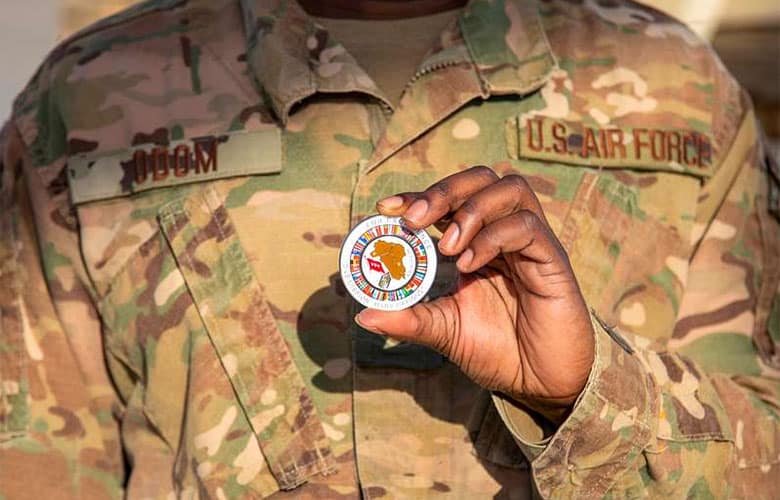
While challenge coins have been associated with the US military for many years, the tradition of US Presidents presenting challenge coins began with President Bill Clinton. He was the first president to have his unique challenge coin and to use them to recognize military personnel, dignitaries, and other notable individuals.
President Clinton was introduced to challenge coins by military personnel during his time in office, and he soon embraced the tradition. His challenge coin featured the presidential seal on one side and the White House on the other. President Clinton displayed various military challenge coins that he had received on a special rack in the Oval Office, highlighting his appreciation for the tradition and the military community.
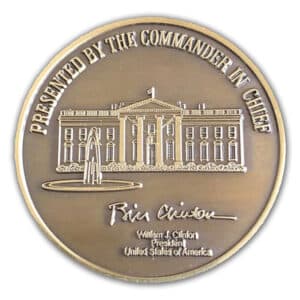
The practice of presidential challenge coins was continued by President George W. Bush, who presented coins to military personnel, especially those who had served in Iraq and Afghanistan. President Bush's challenge coin bore the presidential seal, his signature, and the words "Commander in Chief."
Subsequent presidents, including Barack Obama, Donald Trump, and Joe Biden, have maintained the tradition of having their unique challenge coins and presenting them as tokens of appreciation and recognition to military personnel and other distinguished individuals. The presidential challenge coin has become an integral part of the relationship between the Commander-in-Chief and the men and women who serve the nation, symbolizing gratitude, honor, and respect.
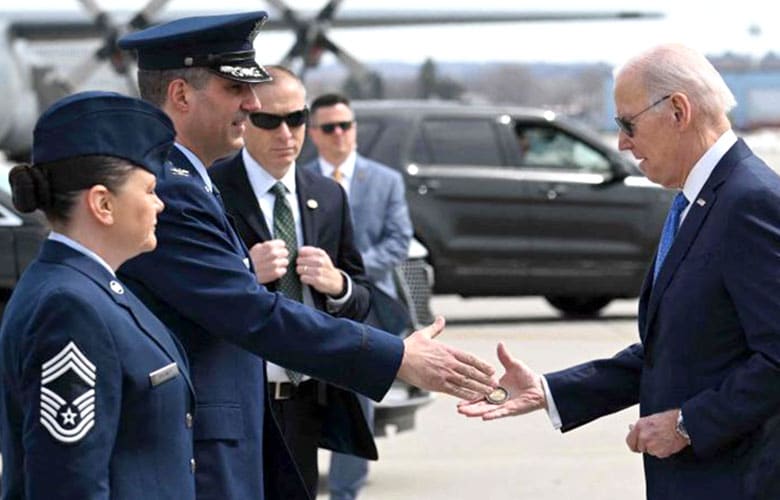
The use of challenge coins has spread to police and fire departments, as well a many businesses and organizations who have now adopted the challenge coin tradition to recognize their employees' achievements, foster team spirit, and commemorate special events.
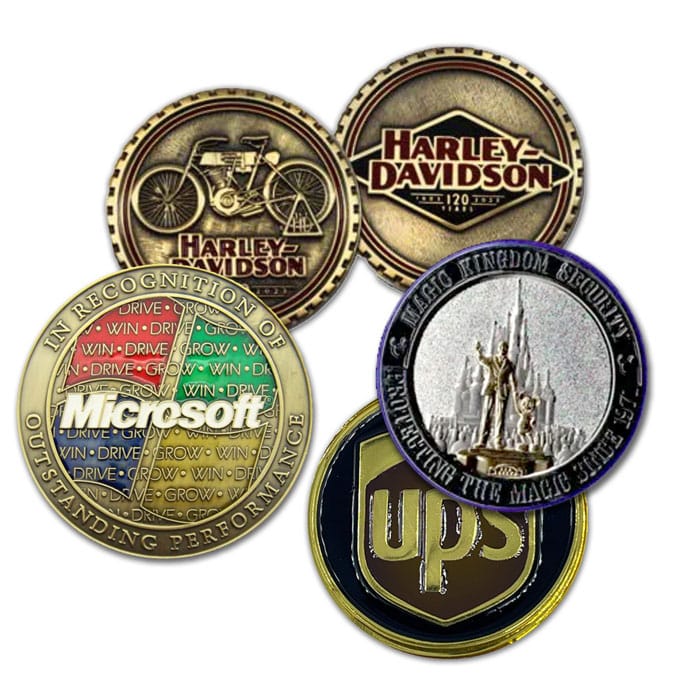
In November of 2008, nine cadets learned firsthand about the tradition of challenge coins when their class went on a special field trip to the Pentagon in the Washington, DC area. They received a VIP tour of the Pentagon and then enjoyed an office tour and luncheon as guest of the Chairman of the Joint Chiefs of Staff, Admiral Mike Mullen, who served as the Chairman under both Presidents George W. Bush and Barack Obama. Each cadet received Admiral Mullen's challenge coin as a memento of their once-in-a-lifetime visit.
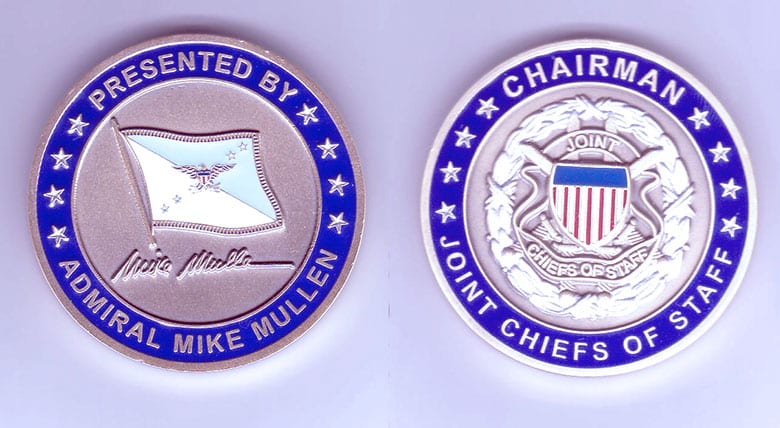
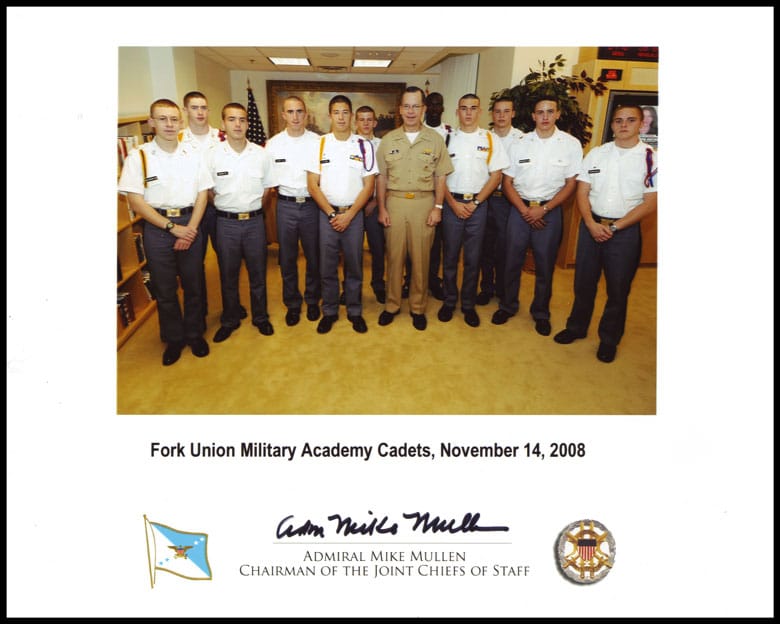
Fork Union Military Academy, with its strong military foundation, first adopted this challenge coin tradition in 2011 when Rear Admiral J. Scott Burhoe, USCG (Ret.), was the President of the school. RADM Burhoe had previously been the Superintendent of the US Coast Guard Academy and was very familiar with the military traditions of the challenge coin and he oversaw the design of the first Presidential Challenge Coin at Fork Union Military Academy.
When RADM Burhoe retired in 2018, the incoming president, Colonel David L. Coggins, USMC (Ret.), continued the use of the president's challenge coin and expanded it use even further in recognizing the achievements of the Academy's cadets and building a sense of pride in Fork Union Military Academy.
The challenge coins not only celebrate individual accomplishments but also contribute to the sense of community and shared values within Fork Union Military Academy.

In a particularly fun way of gifting the president's challenge coin to FUMA cadets, Col. Coggins initiated a special annual event during summer school—The President's Annual Coin Toss in the Pool. Each July, Col. Coggins gathers the summer school attendees at the edge of the pool and explains the significance of the challenge coin and what it means as a symbol of the Academy. He gives the countdown for the young men to leap into the pool—into which he has scattered a variety of pennies, nickels, dimes, quarters, and a few of the prized challenge coins—and dive in search of the coins.
It's an exciting and enjoyable way for Col. Coggins to deliver a message to the students about what Fork Union Military Academy stands for, and it provides a welcome and memorable break from their summer studies.
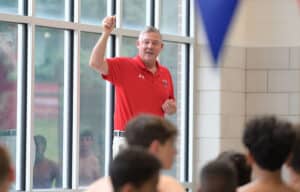
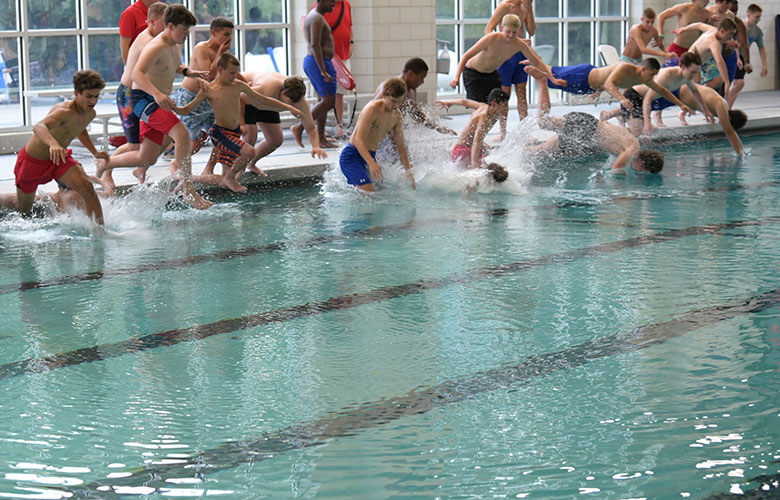
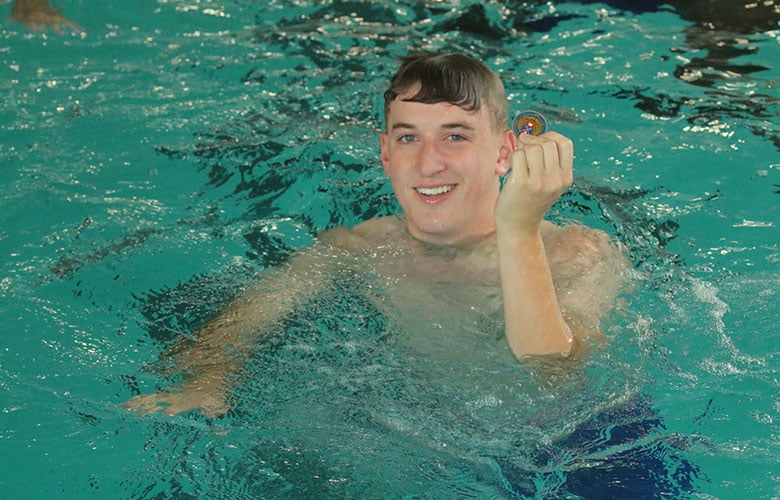
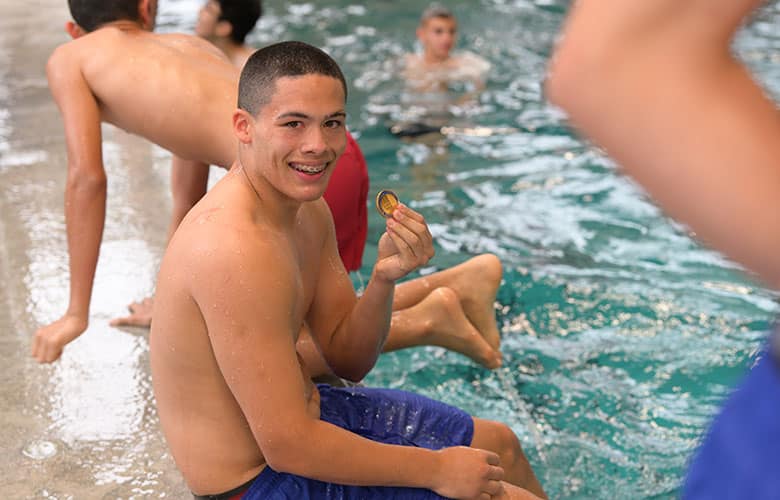
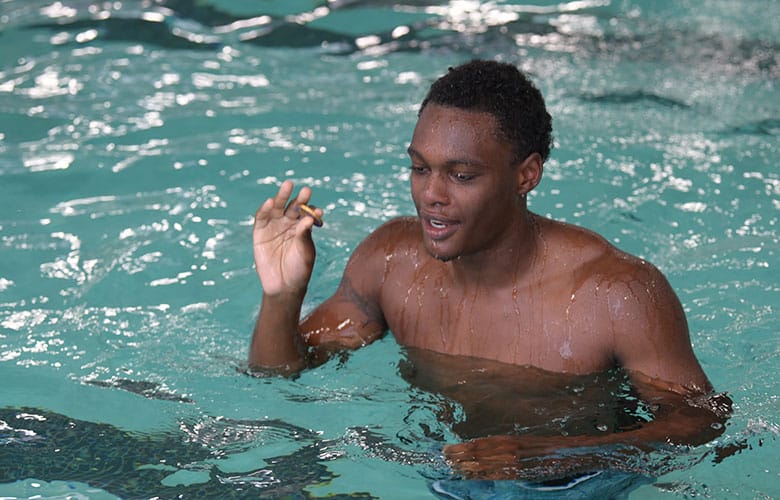
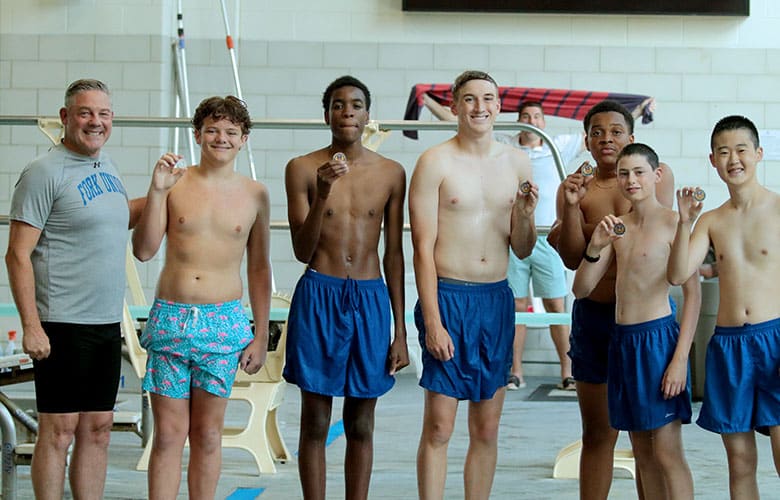
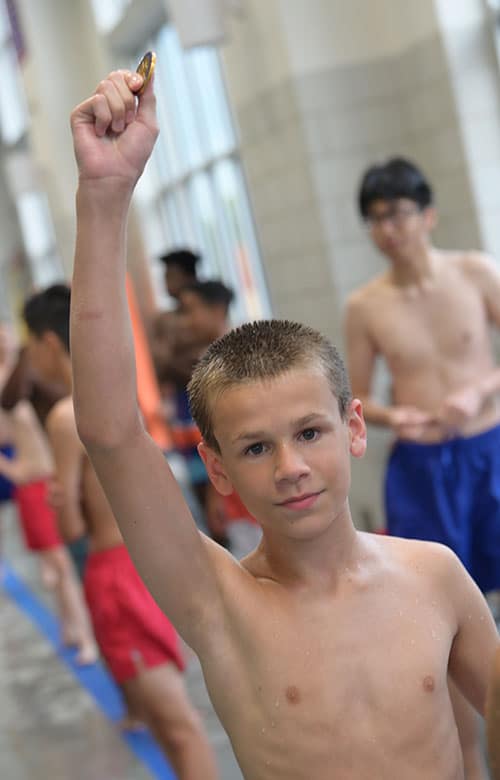
At Fork Union Military Academy, challenge coins are presented by the school president individually to cadets who have demonstrated outstanding performance in academics, leadership, athletics, or service to the school and their fellow cadets. These tokens of appreciation and recognition serve as a constant reminder of the recipient's dedication and commitment to excellence.
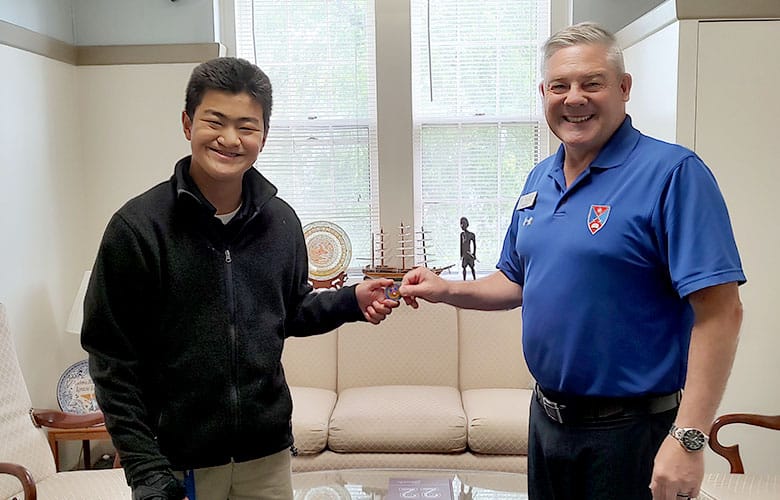
The tradition of challenge coins, with its roots in military history, continues to play a significant role in fostering a sense of honor, unity, and brotherhood within the Corps of Cadets at Fork Union Military Academy. As symbols of recognition and appreciation for exceptional achievements, challenge coins inspire and motivate cadets to strive for excellence in all aspects of their lives. As this storied tradition carries on, challenge coins will remain an integral part of the rich history and culture of Fork Union Military Academy.